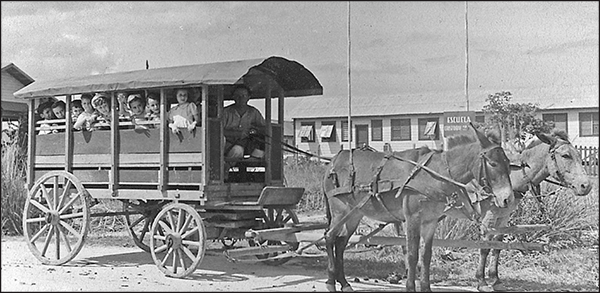By Adrienne Urbanski
SOSÚA: A Refuge for Jews in the Dominican Republic
Through July 25
Museum of Jewish Heritage: A Living Memorial to the Holocaust
36 Battery Place
(646-437-4200, mjhnyc.org)
Sosúa, a rural village near Puerto Plata in the Dominican Republic, opened its doors to Jewish refugees during the late 1930s, when Nazis still allowed Jews to emigrate from Germany but few countries admitted them. For the 500 Jewish settlers welcomed to Sosua, the American Jewish Joint Distribution Committee provided transportation and support in creating a thriving settlement at an abandoned banana plantation. Given land and farm animals, the refugees were expected to create an agricultural community, which for many presented a dramatic lifestyle change. The exhibit documents their community and efforts to find a sense of home alongside the Dominicans.
The inception for the exhibition is largely credited to New York State Senator Eric Schneiderman, whose massive redistricting resulted in his having a largely Dominican constituency. While in Sosúa, Schneiderman visited a synagogue created by the refugees and found a cardboard box containing many of the artifacts that wound up in the exhibit.
“I thought, ‘We can’t just let this story rot,’” said Schneiderman. “I don’t know why this story hasn’t been told more. When I went to the opening and saw a few of the settlers and their descendants, I got very emotional.”
Schneiderman approached the museum with the idea of an exhibit. Survivors were asked to take part in loaning photos and artifacts and sharing their experiences for videos scattered throughout the exhibit. Also present at the opening was Ruth Kohn, a settler who fled Berlin and resettled in Sosúa at the age of 14. “There was humidity and mosquitoes, and malaria was going around, but how could we complain when we were alive and we didn’t know what was happening to our relatives back home?” said Kohn. “I landed in Sosúa and thought, ‘I am alive.’ While I was in Berlin, I kept thinking ‘Just once, to be free again.’”
Kohn lent the museum many of the artifacts in the exhibit and appears in videos describing the life she established there.
“I gave them my report card and told them they could display it, but that they couldn’t open it up and show everyone my grades. My marks weren’t so good because I couldn’t speak Spanish and had no idea what was going on. I just hope no one can figure out the grading system,” said Kohn.“I think the exhibit is extremely realistic; people really get a good feeling of what living there was like. It’s as strong a feeling as any exhibit could give.”
Artifacts such as a hand-carved wooden menorah, a bris gown, a milk jug, report cards, and letters also convey the refugees’ ability to construct a new community, and to find hope in a new land. The photos display the settlement’s progress, showing first time farmers planting crops or milking cows. Through the photos we see the town come together for the refugees piece by piece. Children are shown seated in classrooms, or happily smiling from the windows of a donkey pulled school bus.
Instead of creating a settlement separate from that of the native Dominicans, the refugees merged their culture with the existent one. Photos document both refugees and Dominicans alike being treated by the same doctors, attending the same schools, and working side by side. Video footage depicts refugees who married Dominicans, choosing to live in the settlement rather than return to Europe or immigrate to America. One leaves the exhibit with a strong sense of two disparate worlds coming together to persevere in the face of terror and tragedy.

































